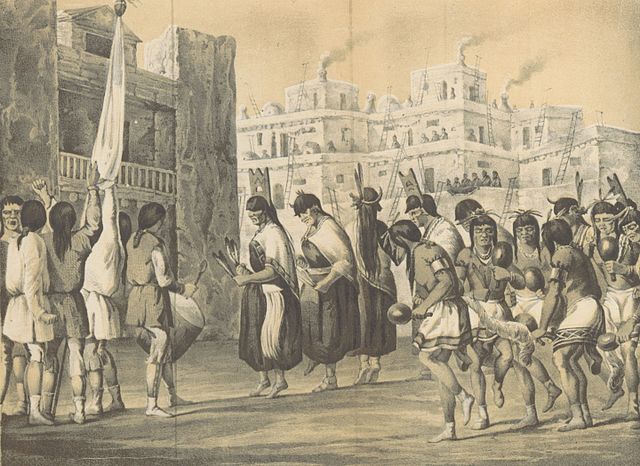Frank Hamilton Cushing was an American anthropologist and ethnologist. He made pioneering studies of the Zuni Indians of New Mexico by entering into their culture; his work helped establish participant observation as a common anthropological research strategy. In recent years, however, questions have emerged about Cushing's activities among the Zuni. Consequently, Frank Cushing's work provides an important case study for considering the ethics of both ethnographic research and the generation of museum collections.
Frank Hamilton Cushing
Cushing at Zuni, c. 1881-82., by John K. Hillers
The Zuni are Native American Pueblo peoples native to the Zuni River valley. The Zuni people today are federally recognized as the Zuni Tribe of the Zuni Reservation, New Mexico, and most live in the Pueblo of Zuni on the Zuni River, a tributary of the Little Colorado River, in western New Mexico, United States. The Pueblo of Zuni is 55 km (34 mi) south of Gallup, New Mexico. The Zuni tribe lived in multi level adobe houses. In addition to the reservation, the tribe owns trust lands in Catron County, New Mexico, and Apache County, Arizona. The Zuni call their homeland Halona Idiwan’a or Middle Place. The word Zuni is believed to derive from the Western Keres language (Acoma) word sɨ̂‧ni, or a cognate thereof.
Zuni Salt Lake, New Mexico, where the Zuni have harvested salt for centuries
We'Wha (1849–1896), a celebrated Zuni lhamana weaver at work on a backstrap loom, photo: John K. Hillers, c. 1871–1907
Image of Zuni Pueblo created during the U.S. Army Corps of Topographical Engineers's 1851 expedition to Arizona which was led by Captain Sitgreaves
Lutakawi, Zuni Governor, photographed before 1925 by Edward S. Curtis






